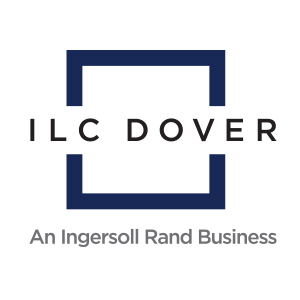Over the past few decades, the pharmaceutical industry has been challenged with the introduction of hormones, steroids, and other cytotoxic materials that are all potentially hazardous to operators and the environment. The main concern is how we can safely process these highly potent materials as they become more common in production facilities.
Companies in the pharmaceutical industry are now producing and processing multiple potent compounds all within the same facility, many times using the same processing equipment, which creates even bigger challenges to the safety of operators. Nowadays it is of the upmost importance to have proper containment technology in place to minimize cross-contamination between manufacturing lots of these potent materials, as well as to assure the safety of facilities and their operators. In a recent webinar, ILC Dover discussed the use of flexible isolator technology as the containment solution for pharmaceutical processing.
Flexible Isolators and the Single-Use Concept
It is extremely important for today’s modern production facilities to implement single-use flexible platforms for high potent containment. There are multiple benefits to single-use platforms from decreased capital expenditure to increased efficiency in processing highly potent materials.
Single-use flexible isolators do not require time-consuming cleaning and costly cleaning validations like traditional containment, and single-use also eliminates the risk for cross-contamination by providing an economically feasible and technical solution for most production facilities across the globe. As explained in the webinar, the life of a single-use flexible isolator is more robust that one might think, as these flexible isolators can be used multiple times while effectively maintaining risk elimination.
A good example is the implementation of a flexible isolator used for an oral contraceptive tablet inspection procedure. Even though some of the inspected tablets are destroyed creating hazardous waste, the flexible single-use isolator can still be used for many campaigns with minimal cleaning and maximum containment for operator protection.
As an engineering control, the design philosophy of flexible isolators and the single-use concept are centered around containment at the source. The least effective method of containment is solely relying on PPE for protection, as the FDA and other authorities generally do not except this strategy. Flexible single-use isolators will reduce this reliance on PPE, while also reducing contamination in the process room and improving efficiency with elimination of cleaning and hold times. Flexible isolators are easily adaptable to a multitude of equipment and applications.
New equipment projects have been found to easily adapt to the high containment of flexible isolators; the retrofitting of flexible isolators onto existing equipment requires a different approach, but can still be easily performed using ILC Dover’s flexible isolators. By retrofitting flexible isolators onto existing equipment, companies will be able to minimize the equipment modifications that often require a re-qualification which normally add substantial costs to a project. Ergonomics is also a key feature when retrofitting with single-use isolators because operators will be able to continue performing the SOP’s with little change to the documents and overall processes.
Material of Construction/Design and Manufacturing
The extremely high strength and elongation properties of the material of construction and the design integrity in manufacturing are key factors when choosing to adopt flexible isolator technology into a production facility. The high strength material is called ArmorFlex® and its a trademark of ILC Dover. This material was purposefully built for pharmaceutical powder processing, using a linear low LDPE blend that is unlike other general commodity film purchased from other distributors, but exclusively manufactured for use in the pharmaceutical industry. There are many important physical properties that a containment material should have when used for a flexible isolator. ArmorFlex® physical properties:
- 100% virgin materials
- High strength (i.e. 500% elongation)
- Resistant to solvents
- Static dissipative
- Chilworth Incendivity tested
- ATEX compliant (anti-static)
- Transparent and lightweight – visibility for operators
- Barrier for controlling O2 or R/H
- Safe to incinerate
ILC Dover’s efficient design process of flexible isolators meets the needs of an array of critical applications requiring containment technology. Some of the most important steps to implementing an effective flexible isolation system, include:
- Determining the area that will be in the containment zone
- Understanding the material flow to integrate various transfer processes
- Evaluating the proper ergonomics needed
- Applying standardized components for the best cost and delivery
Once all of these parameters are met, the final design will be installed, and the operators will be trained on best practices using the new system. Design modifications are common with single-use systems and part of the overall value of the technology. Operators can also provide input for continuous improvement that is easily modifiable and scalable as needed.
The production facility at ILC Dover has first-in-class operations, with all flexible isolators being made from piece parts. The process begins with automated cutting of the pieces, followed by state-of-the-art lap seam welding done with CNC controlled systems, making for a very repeatable and traceable production process. ILC Dover takes the weakest part of the isolator, and essentially turns it into the strongest part with its unique lap seam welding system. A 1” overlap of ArmorFlex® provides a secure Lap Seam weld, providing a high degree of integrity and minimizing the possibility of failure.
Applications in Pharmaceutical Processing
Flexible isolators are deployed in all types of pharmaceutical processes, including:
- Weighing, or dividing up chemicals
- Chemical and drug substance synthesis
- Oral solid dosage production
- Sampling activities
- Packaging operations
These flexible isolators are typically designed to prevent exposure of HPAPI of <50.0 ng/m3 and provide clear walls for operator visibility and increased accuracy, as well as an ergonomically optimized format for easily handling materials and waste. During oral solid production, these isolators are exceptional for activities such as milling and micronization of powder, wet granulation processing activities, tableting and coating operations, as well as processing and transfers at phases in typical oral production facilities.
Benefits of Negative Pressure Control
The key to effectively isolating and controlling hazardous air contaminants is the use of negative (lower) air pressure to control directional airflow patterns. A flexible isolator system, coupled with ILC Dover’s ArmorFlex® Atmospheric Control Module (AMC), provides superior risk mitigation and enhanced containment performance with no loss of ergonomic benefits when correctly designed and operated. This advanced form of isolation technology prevents any exposure to the operators in the event of a flaw or breach in the containment barrier. Establishing unidirectional gas flow through the isolator and maintaining a sufficient vacuum within the containment volume provides an extra layer of defense to the already exceptional containment capabilities of flexible single use isolators.
Cost Benefits and Project Management
One of the best methods to evaluate the implementation of a new containment system is through ROI analysis, specifically the ROHSEI Tool, used to make a comprehensive evaluation on costs and benefits of a flexible single-use isolation system.
Over multiple analyses from a wide range of companies and processing applications, the results were all mostly the same: there are real cost savings and increased processing efficiency when choosing a flexible isolator system from ILC Dover. Some of the largest benefits your company will see are reduced cleaning and validation, reduced utilities including water supply and fixed floor space, less PPE and costly gowning, reduced materials and overall waste, less maintenance, and lower capital expense. All these benefits lead to a faster ROI when compared to traditional isolation systems.
Does your team have a need for single use flexible isolation technology in your facility? To see the flexible single-use system in action, watch the full webinar for more information.

